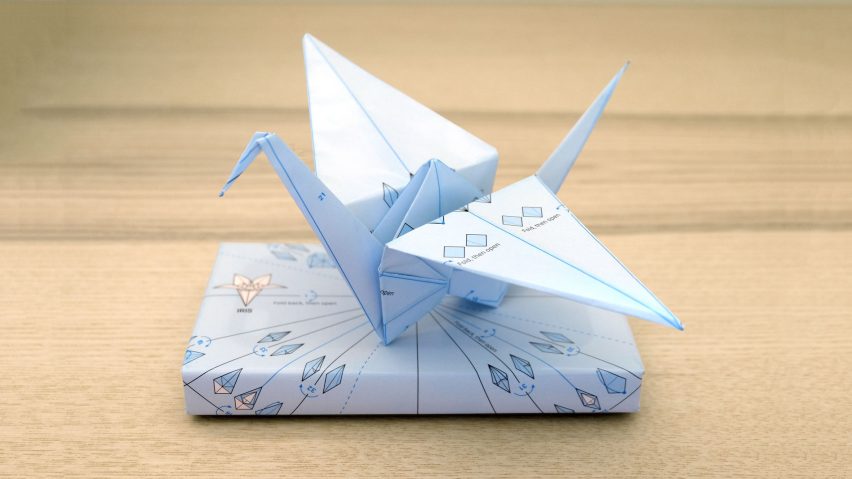
Origami Wrap is a gift wrap printed with folding instructions for origami figures
Portland-based design studio Ilovehandles has created wrapping paper that can have an afterlife as origami figures, to avoid the mess and waste associated with ripping the paper off presents.
Each Origami Wrap paper is printed with diagrams that instruct the receiver on how to make their choice of one of six designs: crane, dog, iris, frog, balloon and fish.
When a gift is unwrapped, the paper can be folded along geometric lines to create a paper object, rather than being tossed straight into the bin.
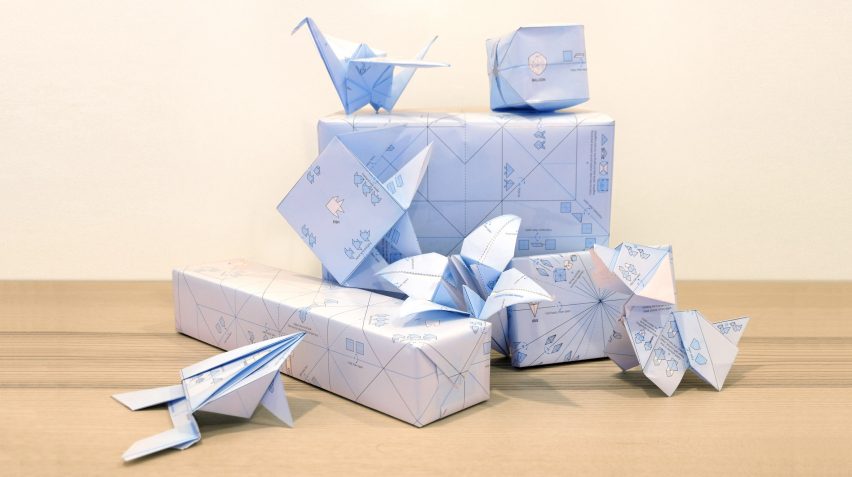
"We spent a lot of time testing the patterns to make sure people could complete them without getting frustrated," explained Ilovehandles co-founder Richard Moore.
"The instructions are the design. There are no additional instructions, but we tested with people who knew nothing about the product to be sure they understood the concept and could make the origami without problems."
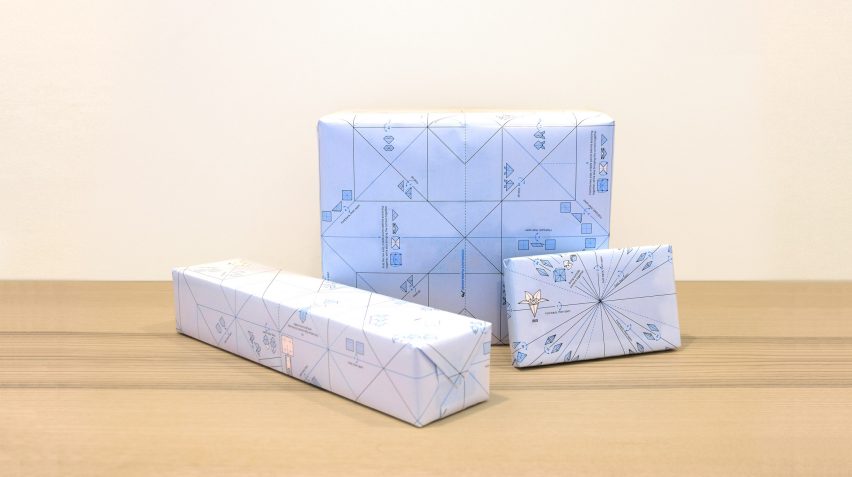
The idea for the origami wrapping paper came from an observation that although wrapping paper looks festive, it is wasteful.
The designers at Ilovehandles then attempted to find a solution that was affordable and also looked good.
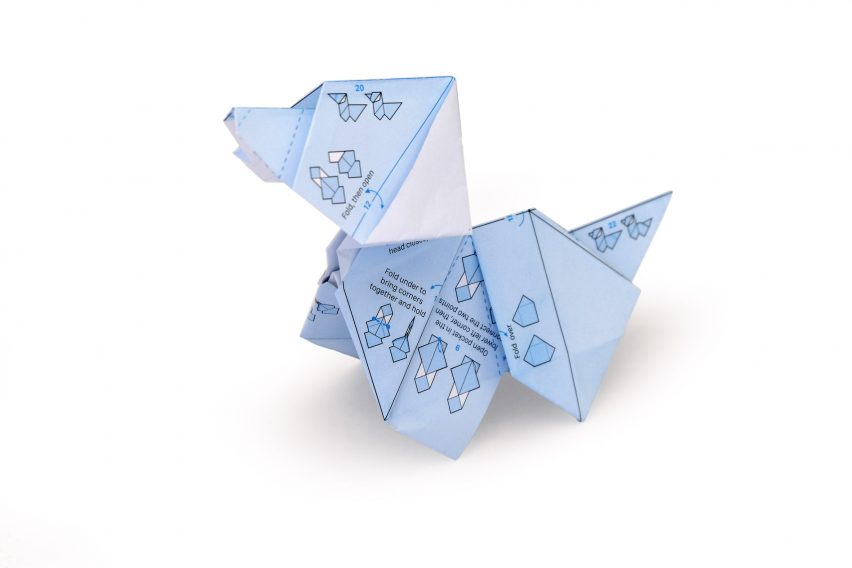
Origami Wrap comes in a pack of five roughly 50 by 75 centimeter sheets. The first batch was printed on standard paper, but the designers have confirmed that the next production run will be made with recycled paper stock to further increase the sustainable nature of their wrapping paper-alternative.
Ilovehandles originally started as an Apple accessories company in 2010. Its initial product was a watch strap for the iPod nano, named Rock Band. In the last few years the studio has branched out from products focused on technology to home accessories and design-driven products for kids.
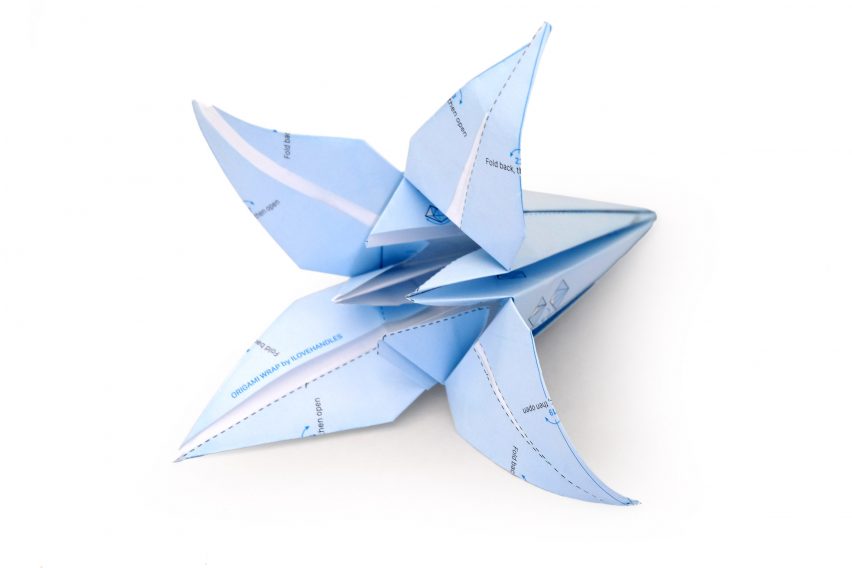
Origami and the art of paper folding has inspired many designers in the fields of architecture, product and fashion design. Marion Pinaffo and Raphaël Pluvinage created a book called Papier Machine whose paper pages could be cut, folded and assembled into a set of 13 electronic toys.